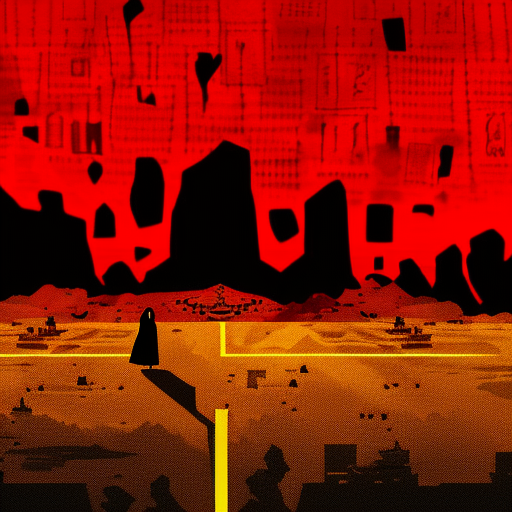One-line Summary:
Persepolis: The Story of a Childhood is a graphic memoir by Marjane Satrapi that vividly depicts her experiences growing up during the Iranian Revolution.
Introduction:
Persepolis: The Story of a Childhood is a captivating graphic memoir that provides a unique and personal perspective on the Iranian Revolution. Written and illustrated by Marjane Satrapi, the book takes readers on a journey through her childhood in Iran, offering a glimpse into the political and social upheaval that shaped her life. Through powerful illustrations and a compelling narrative, Satrapi explores themes of identity, freedom, and the impact of war on ordinary people.
Life in Revolutionary Iran:
The book begins with a young Marjane living in Tehran, Iran, during the Islamic Revolution. Satrapi skillfully depicts the changes that occur in her daily life as the country transitions from a monarchy to an Islamic republic. She highlights the strict rules imposed by the new regime, such as mandatory veiling for women and the banning of Western influences. Despite these restrictions, Marjane remains defiant and rebellious, challenging the oppressive regime through her actions and beliefs.
War and Its Impact:
As the Iran-Iraq War breaks out, Marjane’s world is further disrupted. Satrapi vividly portrays the fear and uncertainty that permeate everyday life during wartime. Through her experiences, readers witness the devastating consequences of war on both a personal and national level. Marjane’s family is directly affected by the conflict, losing loved ones and enduring the constant threat of violence. These experiences shape Marjane’s understanding of the world and fuel her desire for justice and freedom.
Coming of Age and Identity:
As Marjane grows older, she grapples with questions of identity and her place in society. She navigates the complexities of adolescence while also trying to reconcile her Iranian heritage with her desire for personal freedom. Satrapi explores the challenges of straddling two cultures and the tension between individuality and societal expectations. Marjane’s journey of self-discovery is both relatable and thought-provoking, as she learns to embrace her own voice and forge her own path.
Key Takeaways:
- Persepolis: The Story of a Childhood offers a unique perspective on the Iranian Revolution, providing insight into the experiences of ordinary people during this tumultuous period.
- The graphic memoir format allows for a powerful and engaging storytelling experience, combining words and images to convey complex emotions and experiences.
- The book explores universal themes of identity, freedom, and the impact of war, making it relatable to readers from diverse backgrounds.
- Marjane Satrapi’s personal journey serves as a reminder of the resilience and strength of the human spirit, even in the face of adversity.
“In life, you’ll meet a lot of jerks. If they hurt you, tell yourself that it’s because they’re stupid. That will help keep you from reacting to their cruelty. Because there is nothing worse than bitterness and vengeance… Always keep your dignity and be true to yourself.”
– Marjane Satrapi
Conclusion:
Persepolis: The Story of a Childhood is a powerful memoir that offers a compelling and intimate account of growing up during the Iranian Revolution. Marjane Satrapi’s vivid illustrations and honest storytelling provide readers with a deeper understanding of the complexities of war, identity, and the human spirit. Through her experiences, Satrapi reminds us of the importance of staying true to oneself and the enduring power of resilience.












